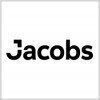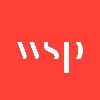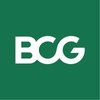Filter interviews by
Clear (1)
WSP Consultant Interview Questions and Answers
WSP Consultant Interview Experiences
1 interview found

(1 Question)
- Q1. Years of experience? Salary Expectations?
(1 Question)
- Q1. Discussion about my role?
Interview Preparation Tips
Consultant Jobs at WSP
Top trending discussions






Interview questions from similar companies

Interview Questionnaire
1 Question
- Q1. What is name mangling?
- Ans.
Name mangling is a technique used by compilers to give unique names to functions and variables to avoid naming conflicts.
Name mangling is used in C++ to support function overloading.
It is also used in Python to avoid naming conflicts in modules.
Name mangling can make it difficult to access variables and functions from outside the class in which they are defined.
In C++, name mangling can be seen by using the 'nm' comman
Skills evaluated in this interview

I applied via Naukri.com and was interviewed in Aug 2020. There were 3 interview rounds.
Interview Questionnaire
1 Question
- Q1. Past experience and communication skills
Interview Preparation Tips

I applied via Naukri.com and was interviewed before Jul 2020. There was 1 interview round.
Interview Questionnaire
1 Question
- Q1. Coming to AEM,Interviewer has covered all the topics.
Interview Preparation Tips

I applied via Recruitment Consultant and was interviewed in Mar 2021. There were 3 interview rounds.
Interview Questionnaire
1 Question
- Q1. Routing and switching related
Interview Preparation Tips
Its all about God's grace.

I applied via Naukri.com and was interviewed in Nov 2020. There were 5 interview rounds.
Interview Questionnaire
2 Questions
- Q1. Questions based on the CV we kept
- Q2. Questions related to powershell, storages, networking in azure IaaS, NSG
Interview Preparation Tips

Interview Questionnaire
1 Question
- Q1. Basics questions on SAP
Interview Preparation Tips

I applied via Naukri.com and was interviewed before Oct 2021. There were 3 interview rounds.

(2 Questions)
- Q1. What is AD dns dhcp?
- Ans.
AD DNS DHCP are Microsoft technologies used for network management and authentication.
Active Directory (AD) is a directory service used for authentication and authorization of users and computers in a network.
Domain Name System (DNS) is used for name resolution of network resources.
Dynamic Host Configuration Protocol (DHCP) is used for automatic IP address assignment to network devices.
AD, DNS, and DHCP are often used ...
- Q2. What is IaaS SaaS PaaS?
- Ans.
IaaS, SaaS, and PaaS are cloud computing models that provide different levels of infrastructure, software, and platform services.
IaaS (Infrastructure as a Service) provides virtualized computing resources over the internet, such as servers, storage, and networking.
SaaS (Software as a Service) delivers software applications over the internet, eliminating the need for local installation and maintenance.
PaaS (Platform as ...
General questions for 1 hors online exams
Interview Preparation Tips
Skills evaluated in this interview

I applied via Job Fair and was interviewed before May 2021. There were 2 interview rounds.

(1 Question)
- Q1. What is your job role
Interview Preparation Tips

Interview Questionnaire
1 Question
- Q1. Hard core techanical
WSP Interview FAQs
Recently Viewed
Tell us how to improve this page.
WSP Interviews By Designations
- WSP Graduate Engineer Interview Questions
- WSP CAD Technician Interview Questions
- WSP Assistant Engineer Interview Questions
- WSP Engineer Interview Questions
- WSP Structural Engineer Interview Questions
- WSP Project Manager Interview Questions
- WSP Highway Engineer Interview Questions
- WSP Senior Engineer Interview Questions
- Show more
Interview Questions for Popular Designations
- Associate Consultant Interview Questions
- Senior Consultant Interview Questions
- Lead Consultant Interview Questions
- Senior Associate Consultant Interview Questions
- Technical Consultant Interview Questions
- SAP Abap Consultant Interview Questions
- AST Consultant Interview Questions
- SAP Fico Consultant Interview Questions
- Show more
WSP Consultant Interview Process
based on 1 interview
Interview experience
Consultant Interview Questions from Similar Companies
Fast track your campus placements
WSP Consultant Reviews and Ratings
based on 6 reviews
Rating in categories
|
BIM Modeller
78
salaries
| ₹0 L/yr - ₹0 L/yr |
|
Senior Engineer
61
salaries
| ₹0 L/yr - ₹0 L/yr |
|
Principal Engineer
58
salaries
| ₹0 L/yr - ₹0 L/yr |
|
Engineer
57
salaries
| ₹0 L/yr - ₹0 L/yr |
|
CAD Technician
57
salaries
| ₹0 L/yr - ₹0 L/yr |

AECOM

Jacobs Engineering Group

Fluor Corporation

TCS
- Home >
- Interviews >
- WSP Interview Questions >
- WSP Consultant Interview Questions















